naoki
Well-Known Member
I got this Cattleya mooreana from Peruflora this May. Even though the plant is not so well established yet, it decided to shoot 2 inflorescences. I broke one of them to save energy, but let one of them to flower. I had a C. luteola (also from Peruflora, but from last year) flowering at the same time, so I decided to take side-by-side photos.
Carl Withner's The Cattleyas and Their relatives Vol. 1 has some story about his discovery of this species. He saw it in Lee Moore's import in 1958, but the unestablished plant flowered and died (I hope mine can make it). Withner didn't press it as the type specimen, so he couldn't describe it until another individual was found in 1987.
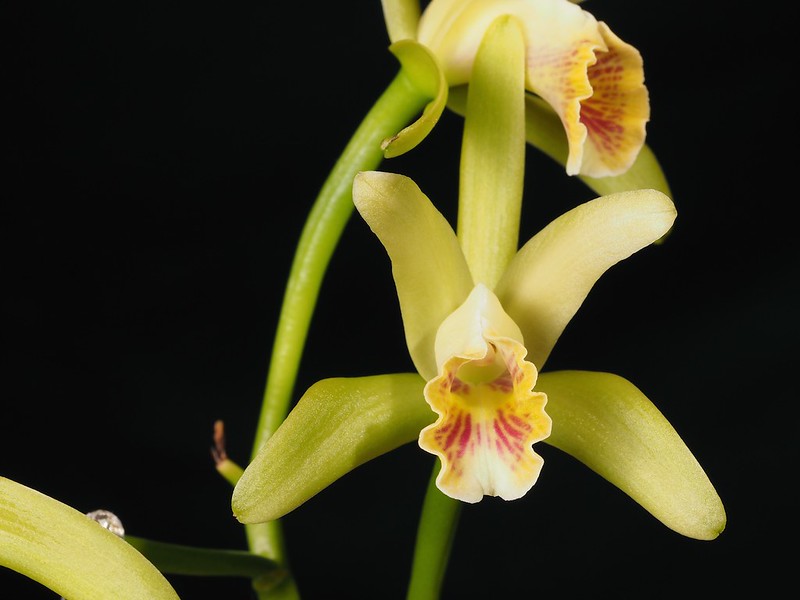
Cattleya mooreana 'NT2' on Flickr
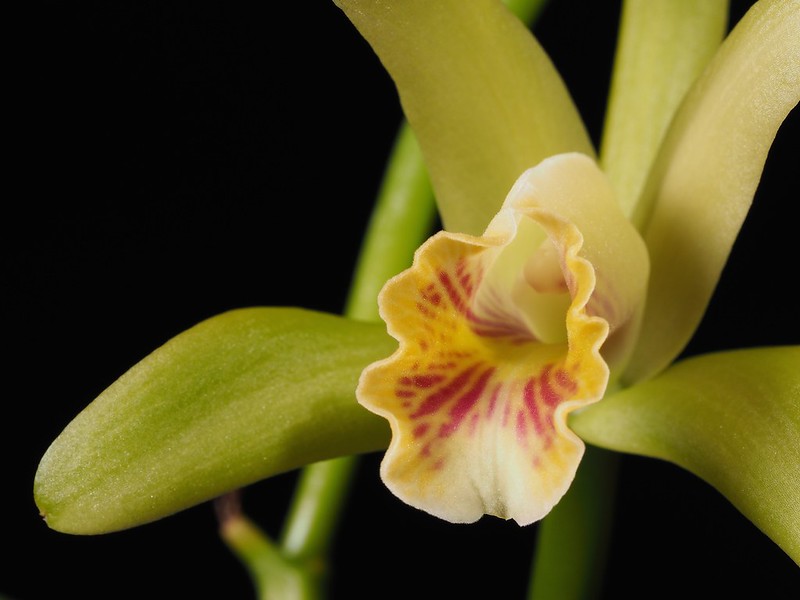
Cattleya mooreana 'NT2' on Flickr
C. luteola (left) and C. mooreana (right). C. luteola flowers were getting old, so it is not in a good condition.

Flowers of Cattleya luteola and C. mooreana 'NT2' on Flickr
Lip comparison:
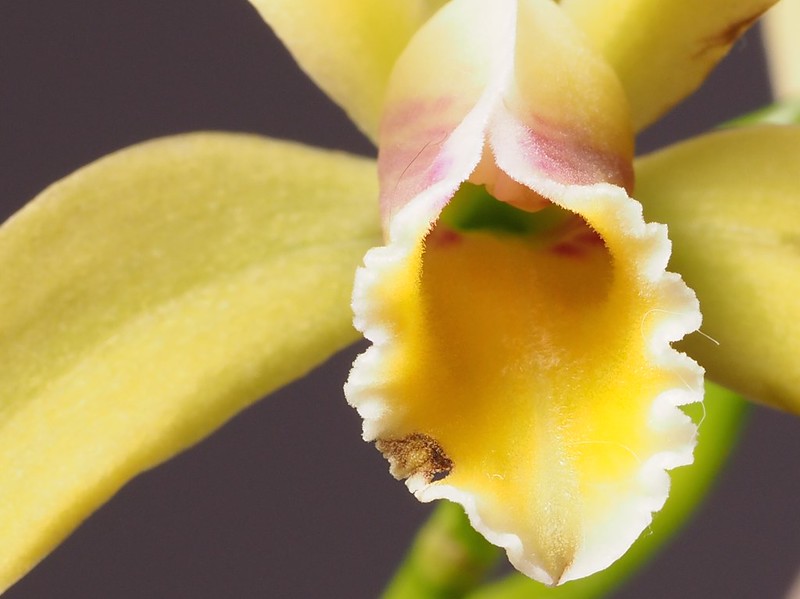
Cattleya luteola lip on Flickr
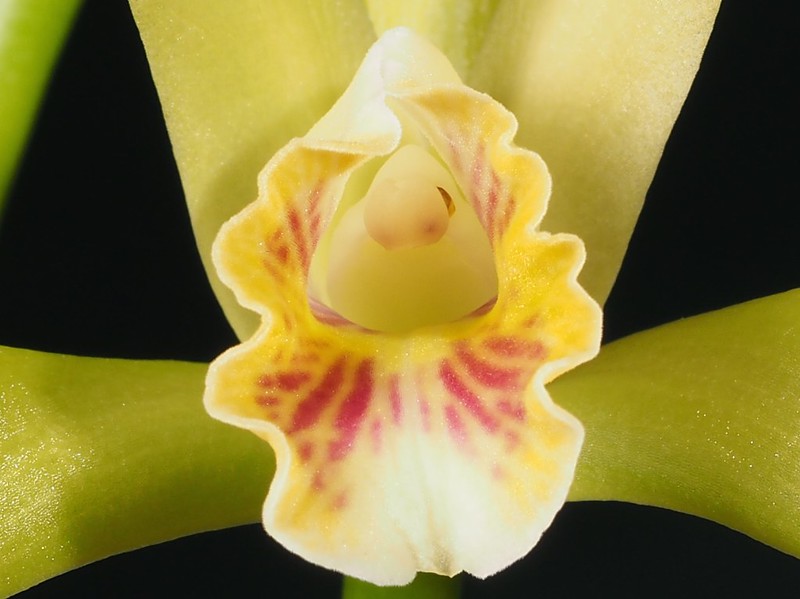
Cattleya mooreana 'NT2' lip on Flickr
C. luteola lips seem to be more frilly around the edge. This C. luteola individual has red marking along the side lobes of the lip (inside). But the type flower was completely yellow according to Withner's book. The lip of C. mooreana is much thicker than C. luteola. When you look at the red markings on the front lip, you can see that it is under a transparent layer of cells. And it has some glossy look. So in addition to the thickness and red marks, the texture of the lip surface is quite different. Under magnification, it is beautiful.
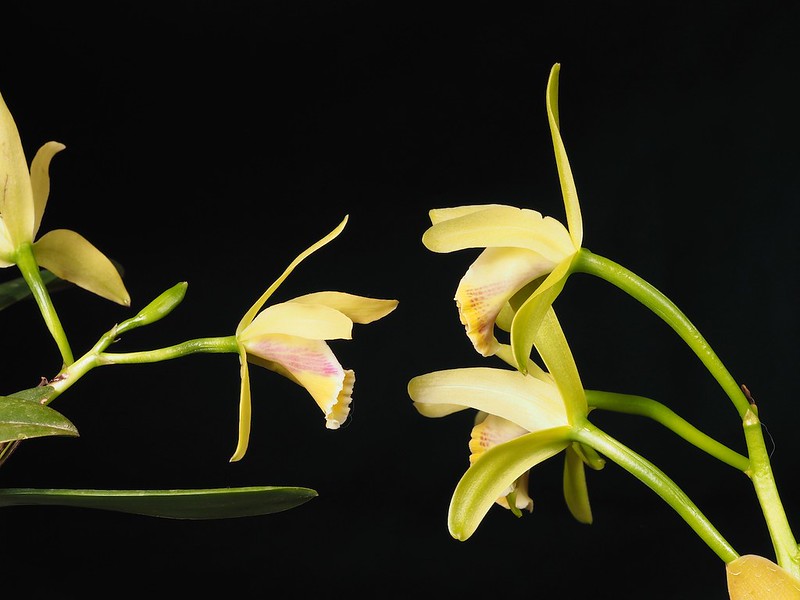
side view of Cattleya luteola and C. mooreana 'NT2' on Flickr
C. luteola (left) and C. mooreana 'NT2' (right). Note that while the flower size of C. mooreana is only slightly larger than that of C. luteola, the ovary of C. mooreana is huge. Withner noted this. Also the stem of the inflorescence is much more robust.
Plant size:
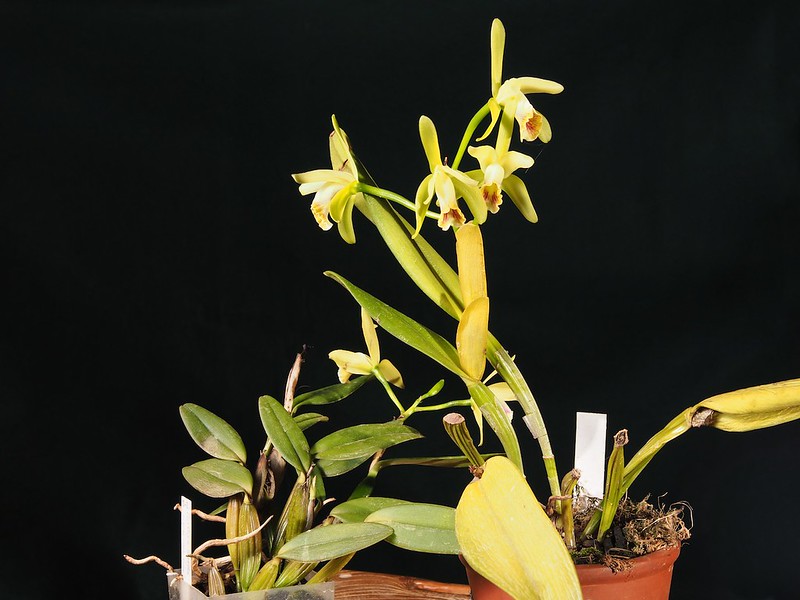
Plants of Cattleya luteola and C. mooreana 'NT2' on Flickr
C. luteola (left) and C. mooreana 'NT2' (right). The difference in the plant size is huge. You can see that C. mooreana is not well established yet. I haven't figured out what condition this species prefers, but it seems to be quite touchier than other Cattleya species.
Carl Withner's The Cattleyas and Their relatives Vol. 1 has some story about his discovery of this species. He saw it in Lee Moore's import in 1958, but the unestablished plant flowered and died (I hope mine can make it). Withner didn't press it as the type specimen, so he couldn't describe it until another individual was found in 1987.

Cattleya mooreana 'NT2' on Flickr

Cattleya mooreana 'NT2' on Flickr
C. luteola (left) and C. mooreana (right). C. luteola flowers were getting old, so it is not in a good condition.

Flowers of Cattleya luteola and C. mooreana 'NT2' on Flickr
Lip comparison:

Cattleya luteola lip on Flickr

Cattleya mooreana 'NT2' lip on Flickr
C. luteola lips seem to be more frilly around the edge. This C. luteola individual has red marking along the side lobes of the lip (inside). But the type flower was completely yellow according to Withner's book. The lip of C. mooreana is much thicker than C. luteola. When you look at the red markings on the front lip, you can see that it is under a transparent layer of cells. And it has some glossy look. So in addition to the thickness and red marks, the texture of the lip surface is quite different. Under magnification, it is beautiful.

side view of Cattleya luteola and C. mooreana 'NT2' on Flickr
C. luteola (left) and C. mooreana 'NT2' (right). Note that while the flower size of C. mooreana is only slightly larger than that of C. luteola, the ovary of C. mooreana is huge. Withner noted this. Also the stem of the inflorescence is much more robust.
Plant size:

Plants of Cattleya luteola and C. mooreana 'NT2' on Flickr
C. luteola (left) and C. mooreana 'NT2' (right). The difference in the plant size is huge. You can see that C. mooreana is not well established yet. I haven't figured out what condition this species prefers, but it seems to be quite touchier than other Cattleya species.



